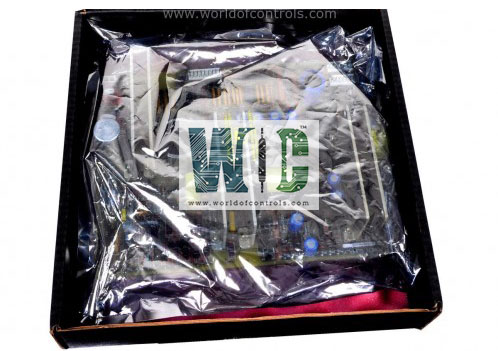SPECIFICATIONS
Part No.: IS230STTC2ASTTC2AG11
Manufacturer: General Electric
Country of Manufacture: United States of America (USA)
Number of channels: 12
Thermocouple types: E, J, K, S, T
Technology: Surface-mount
Product Type: Thermocouple Terminal Board
Availability: In Stock
Series: Mark VIe
Functional Description
IS230STTC2ASTTC2AG11 is a thermocouple terminal board developed by GE. It is a part of the Mark VIe control system. The terminal board represents a compact and versatile solution tailored for mounting on DIN-rails or flat surfaces. Designed to meet the demands of industrial environments, this board offers seamless integration and reliable performance for thermocouple input applications.
Product Attributes
- Thermocouple Input Capacity: With 12 thermocouple inputs, the board provides extensive connectivity options for monitoring and control systems. This capacity enables the board to effectively handle multiple thermocouple sensors, catering to diverse industrial requirements.
- Compatibility with Processor Boards: The terminal board seamlessly integrates with either the PTCC thermocouple processor board on the Mark VIe or the VTCC thermocouple processor board on the Mark VI. This compatibility ensures versatility and ease of integration within different control systems, enhancing overall operational efficiency.
- Signal Conditioning and Cold Junction Reference: The terminal board features on-board signal conditioning and cold junction reference mechanisms, mirroring the capabilities of the larger TBTC board. This ensures consistent and accurate temperature measurements, essential for precise control and monitoring in industrial processes.
- Terminal Block Configuration: High-density Euro-Block type terminal blocks are mounted on the terminal board, providing robust and secure connections to external devices. Two types of terminal blocks are available, offering flexibility to accommodate various wiring configurations and connection preferences.
- On-Board ID Chip for System Diagnostics: An integral feature is the on-board ID chip, which plays a crucial role in system diagnostics. By uniquely identifying the board to the processor, this chip facilitates comprehensive diagnostic analysis, aiding in the detection and resolution of potential issues or anomalies within the system.
Other features
- Thermocouple Compatibility: Supports multiple thermocouple types, including E, J, K, S, and T thermocouples, as well as millivolt (mV) inputs. This versatility allows users to interface with various thermocouple sensors, accommodating different temperature measurement needs across different industrial processes.
- Span Range: With a span range of -8 mV to +45 mV, the terminal board offers precise and dynamic measurement capabilities. This wide span range enables accurate temperature sensing across a broad spectrum of temperatures, ensuring reliability and consistency in temperature monitoring applications.
- Cold Junction Compensation: Incorporates cold junction compensation, with the reference junction temperature measured at a single location. This feature ensures accurate temperature readings by compensating for temperature differentials at the junction point, maintaining measurement integrity and reliability.
- Cold Junction Temperature Accuracy:Boasts impressive cold junction temperature accuracy, with a tolerance of -17°C. This high level of accuracy ensures precise compensation for temperature differentials, minimizing measurement errors and enhancing the overall reliability of temperature data.
- Fault Detection Mechanisms: To enhance system reliability and safety, the board is equipped with fault detection mechanisms, including high and low hardware limit checks. These checks help identify abnormal conditions or out-of-spec measurements, allowing for timely intervention and maintenance to prevent system malfunctions or damage.
- ID Chip Verification: On-board ID chip located on the JA1 connector. This chip plays a critical role in system diagnostics by verifying the board's identity to ensure seamless integration and proper functioning within the system architecture.
The WOC team is always available to help you with your Mark VIe requirements. For more information, please contact WOC.
Frequently Asked Questions
What is IS230STTC2ASTTC2AG11?
It is a thermocouple terminal board developed by GE under the Mark VIe series.
Which thermocouple types are supported?
It supports a variety of thermocouple types, including E, J, K, S, and T thermocouples, as well as millivolt (mV) inputs. This versatility allows users to interface with different thermocouple sensors, catering to diverse temperature measurement needs in various industrial processes.
What is the span range of STTC?
The terminal board offers a span range of -8 mV to +45 mV, providing precise and dynamic measurement capabilities. This wide span range ensures accurate temperature sensing across a broad spectrum of temperatures, enhancing reliability and consistency in temperature monitoring applications.
How does the board handle cold junction compensation?
The board incorporates cold junction compensation, with the reference junction temperature measured at a single location. This feature compensates for temperature differentials at the junction point, ensuring accurate temperature readings and maintaining measurement integrity and reliability.
What is the cold junction temperature accuracy of the terminal board?
It boasts impressive cold junction temperature accuracy, with a tolerance of -170C. This high level of accuracy enables precise compensation for temperature differentials, minimizing measurement errors and enhancing the overall reliability of temperature data.
